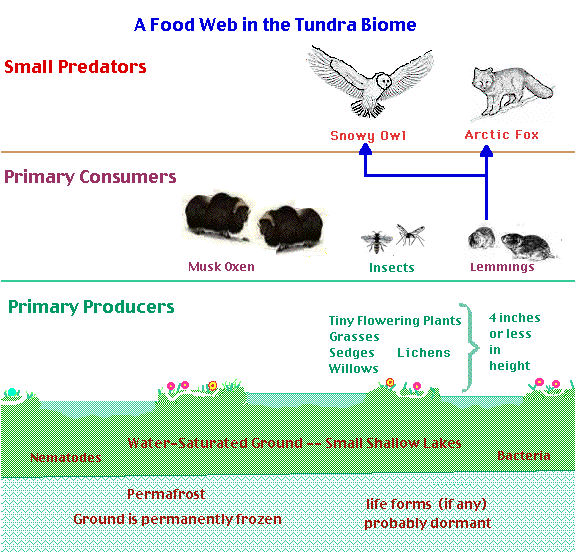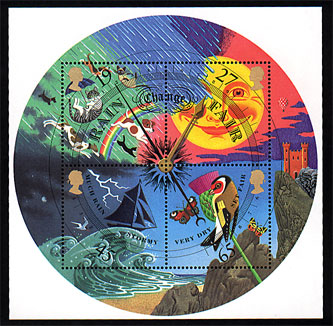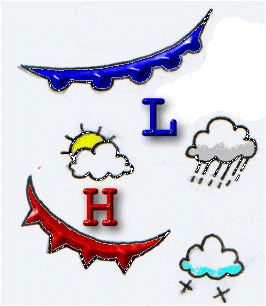Updated May 6 2008
Pick your topic: Physics Ecology Weather
The Chemistry Unit: Chemicals in Action
Week One Sept 5 to 8 / Feb 1 to 8

- Introduction to course material, expectations, assessment and evaluation techniques.
- Opening comments with introduction to Website and navigation; a must for every student.
- Chemistry notes may be found at
 for all the note references listed below!
for all the note references listed below!
- Review of grade nine:
Atomic theory: Note #1 and # 2
- Proton, electron, & neutron
- Isotopic nomenclature of the elements Note to be found at

- Determining the number of neutrons in the nucleus
- Bohr structure of the electron shells
- Introduction to ions, how there are formed
- Rows, periods, families grouping of the periodic table
- For a note on the above topics

Just click on the beaker to go to the note
- Identifying laboratory equipment used in chemistry
- Three useful notes may be found at
a) Classification of Matter  b)Mixtures and Compounds
b)Mixtures and Compounds  c) Properties of Matter
c) Properties of Matter 
- Physical and chemical changes and properties; worksheets. Note #3
Examples looked at: viscocity and ductility (physical)
i) Methane + oxygen, ii) green strip aluminum + sulfur (chemical)
- Text book work see note # 4
- Classifying of compounds or chemicals
- Chemicals: how to describe and reasons for studying chemistry
Two exercises to be completed, click on the green beaker above and its the fourth and fifth note.
- Matter Work Sheet Note # 5 Hand in on Monday
- Household Chemicals as found in various locations in the household.
Introduction to hazard symbols Note # 8
- Sample multiple choice quiz for you to try.

Week Two Sept 11 to 15 / Feb 11 to 15
- Test near the end of the week, Friday; physical chemical changes and experiment observations.
- What to look for in a chemical reaction. See note #9
- Testing for gases; a board generated note via experiment.
- hydrogen
- oxygen
- carbon dioxide
- water vapour
- Physical and chemical properties and reactions and Lab experiments to show physical chemical reactions (For proper lab behavior see ROE Laboratory Rules at the bottom of the page.)
- copper sulfate in water
- magnesium and vinegar (page 71)
- reaction of sucrose and fructose with Benedict's solution. Which one is chemical?
- reaction of aluminum metal and calcium metal with water. Which one is chemical?
- hydrogen and oxygen
Worksheet for this lab at  Note # 7. Should be done on Tuesday
Note # 7. Should be done on Tuesday
Lab report to be haned in (comm & inq marks)
- Periodic table: metals nonmetals, losers and gainers
- Chemical families based on columns; four that you should know
alkali metals, alkaline earth metals, halogens & noble or inert gases
How this ties in with valence numbers.
This was done as a board note followed by a worksheet with answers on the Answer Page at  . Make sure you select the corresponding answer set.
. Make sure you select the corresponding answer set.
- Introduction to valence numbers and reading them off the periodic table See note # 10
- Chemical nomenclature: binary compounds
Developing the concept of criss crossing valence values.
- Criss-crossing valence values to write the proper formula for an ionic univalent compound; worksheet given out.
- Uni & divalent elements.
Week Three Sept 18 to Sept 22 / Feb 18 to 22
- Quiz on binary compounds this week
- Uni & divalent elements.
- divalent atoms and how to use in nomenclature, use of Roman numerals
Work sheets, answers on the Net
- Nobel gases and diatomic gases
- Polyatomic ions: ammonium, hydroxide, cyanide, chlorate, phosphate, carbonate, bicarbonate, nitrate, & sulfate
The big eight, see practice work sheet
You must know the formula of these polyatomic ions and their appropriate valence value.
A list of required polyatomic ions is on the Chem Chart page or 
- Testing Ionic Properties
- Several quizzes given on select topics during this week
- Making a molecular compound in the lab: carbon (charcoal) is burned in air and the gas is collected and tested with limewater.
- Introduction to molecular compounds; two non-metals joining together by sharing electrons
Diatomic gases and prefix method of naming non-metal molecular compounds.
- Worksheets to practice nomenclature; all types
- Introduction to balancing equations; Word to skeleton to balanced.
- Five types of reactions: Duplo demonstation.
Chemical reaction types; 5 of them
- Synthesis
- Decomposition
- Single displacement
- Double displacement
- Combustion
- Quiz at the end of the week
Week Four Sept 25 to Sept 29 / Feb 25 to Feb 29
- Work sheet on balancing & reaction types (Monday); test on Friday
- Introduction to chemical reactions
Key terms: reactant, product, endothermic, exothermic, synthesis, decomposition, combustion, single and double displacement, catalyst
- Chemical equations: word, skeleton, and balanced
Why equations are to be balanced, recognizing when an equation is balanced, and how to balance
- Lab done to look at the different types of chemical reactions
observations, balanced equations and reaction types are required
- magnesium + oxygen
- heating potassium chlorate (gas test)
- barium nitrate + sodium sulfate
- an iron nail in blue copper sulfate solution
- zinc added to concentrates hydrochloric acid (gas test)
- vinegar (acetic acid) is added to baking soda (sodium hydrogen carbonate) (gas test - limewater)
- Factors that effect reaction rates; four labs to show these effects
Note given out on the five factors
Week Five Oct 2 to Oct 6 / March 3 to March 6
- Lab to look at the factors affecting reaction rates
- sodium in hot and cold water
- magnesium in dilute and concentrated acid
- potassium in water
- hydrogen peroxide is added to Rochelle salt (sodium potassium tartarate) and in the presence of a cobalt (II) chloride catalyst
- chalk is reacted with hydrochloric acid stick form versus powder form
- Exp
- Introduction to acids & bases; the three theories; the first one is the one you must know!
ect work sheets on these topics!
- A look at acid and bases: you are to make short note from text book
Indicators in the lab: a look at bromthymol blue, methyl orange, and phenolphthalien
The pH scale
Testin - How acids and bases are chemically produced
- A metal (sodium) is reacted with oxygen producing an oxide. The oxide is dissolve in water producing a base. Tested with bromthymol blue
- A nonmetal (sulfur)is reacted with oxygen and the gas produced (a nonmetallic oxide) is dissolved in water producing an acid. Tested with bromthymol blue.
- A note and explination of pH and hydrogen ion concentration
- snow problems on Wednesday
- Work sheets given out on acids and bases.
- Reaction rate experiment: sodium thiosulfate reacts with hydrochloric acid. The reaction is timed at different temperatures. A graph was plotted, an inverse expontential curve
- Take home assignment given out on Thursday Opps! You didn't get it.
Week Six Oct 10 to 13 / March 10 to March 14
March Break
Week Seven Oct 16 to 20 / March 17 to March 20
- Review for Tuesday or Wednesday's test
Unit One Chemistry test
Want to know what is on this test? Just look at what has been covered; its all there! or for a quick review

- Start of the second Unit Motion this week
- Literacy practice test this week
The Physics Unit

This unit has mathamatics in it. A calculator and ruler are an absolute must. Protractor for measuring angles is also needed.
- What can be measured
- Rounding-off and significant digits;
- Math skills review
- Density experiment graphing and slopes. (Density of lead worksheet)
Week Eight Oct 23 to 27 / March 25 to March 28
- Literacy test this week
- Outline of four basic concepts of the motion unit:
- Slopes positive and negative, rise over run etc.
- Solving mathematical equations; make sure you have your formula sheet.
- Problem analysis. How to set up & answer properly a motion word problem; see Internet note
- Drawing lines and angles. This is the basics of vectors
- Lego road to show positive and negative motion
- Plotting graphs and reading information from them; extrapolation and interpolation.
- Distance - Time graphs worksheet Internet
- Position - Time worksheet Internet K/U category assessment.
- Problem solving using my system os scheme of problems analysis, let the problem solve itself. A taught lesson on the board using examples.
- "Working with Equations" (5 questions). Over the weekend, to be handed in.
Week Nine Oct 30 to Nov 3 / March 31 to April 4
- "Working with Equations" to be handed in on Monday, answers are on the Internet.
- Practice Motion Problems, another problem solving exercise.
Handed in Tuesday.
- Two motion experiments:
- Using a yellow toy bulldozer, motion measurements are collected.
- Rolling a ball down the hall, distance and a time is measured.
These are lab reports with subsequent write ups to be handed in.
- Data is tabulated in a chart, graphs are draw and slopes determined.
- Watch for homework quizzes this week.
- Working with distance, time data to determine velocity. Complete discussion of Motion Formula Sheet
- Working with velocity time data to determine acceleration; what is acceleration?
- Working with areas under curves; what does the area under a velocity time graph mean?
- Acceleration work sheets.
Week Ten Nov 6 to 10 / April 7 to April 11
- Introduction to scalars and vectors. Drawing vector diagrams and using the scaled diagram to solve vector type problems.
Lego road to intoduce one dimensional vectors, example used was displacement.
- Difference between distance & displacement.
Difference between speed and velocity.
- A protractor and ruler is essential to do this work.
- Measuring angles and recording them in the proper vector notation derived from compass points.
- Vector diagrams in two dimensions. Recording magnitude and direction with proper units.
- Vector addition in two dimensions. Protractor is a must!
Week 11 Nov 13 to 17 / April 14 to 18
- Assignment from Friday handed in today
- Vector quizzes, Monday and Tuesday, Wednesday homework quiz from text book questions.
- Small end of unit test; velocity, acceleration, graphing and vector analysis.
- Introduction to Ecology
- Introductions to the terms and concepts of ecology. To assist in your studies a series of notes, slide show and web diagrams are made available for your viewing. Just click on this link

- Monday's note is an intoduction to the study of ecology
Terms introduce: biosphere, ecology, ecosystem, communities, populations, biotic, abiotic, and most importantly levels of biological organization
- Tuesday: Notes on interpersonal relationships, survival, populations, habitat, niche. Hand out note on characteristics of ecosystems with work sheets.
- Wednesday: Feeding relationships between predator-prey and parisite-host.
Bird and animal project assigned; due next Wednesday
- Thursday: Food chains and food webs
Ecology terms puzzle
Week Twelve Nov 20 to 24 / April 21 to April 25
The Biology Unit: Ecology

This unit will make extensive use of the text book.
Several group projects will be completed; endangered species, food chain, and biome study.
Emphasis will be placed on maintaining a note book.
- Parents night this week Thursday PD Friday
Students may work on project if research material is present.
- Note on energy flow and a food web
- Terms: autotrophs, heterotrophs, deutritivores (detritivores), trophic levels, biomass,
- A look at food pyramids
- Note on Survial
- Bioamplification; concentration of toxic substance as you go up a food chain
- Working with food webs
- Trophic Levels: a worksheet
- Web of Life, the video & worksheet
Week Thirteen Nov 27 to Dec 1 / April 28 to May 2
- Quiz on building &/or using food webs/chains; Relationships in Ecosystems, a Pre-Test, Test to follow.
- Start of the Biome project; 11 groups studying these biomes

- tundra
- boreal forest
- grassland
- temperate deciduous forest
- Great Lakes
- East coast aquatic biome
- West coast aquatic biome
- Desert
- Mountain Alpine
Biome project outlines may be found at 
- Map to colour on North American biomes.
- Candian biomes and Land Environments
- Cycles in Nature: Overhead diagram & Internet notes

- Classification of Communities worksheet
- Worksheet on the cycles: water carbon and nitogen with a summative worksheet called "Cycles"
Week Fourteen Dec 4 to Dec 8 / May 5 to May 9
- Case study: Pesticides & Should we Interfere with Natural Cycles?
- Quiz Tuesday on Last two days work: The Cycles and Pesticides.
- Note making on Populations
Drawing a population histogram
- Quiz on populations: Monitoring Changes in Population and Limits of Population
- Biome project is due on Friday of this week, not to be handed in but checked for details.
LI>Introduction to soils and soil types; here's a diagram that outlines soil horizons: a board copied note.

- Tuesday and Wednesday in library to do research on your assigned biome
- Soil discussion with copied notes
Week Fifteen Dec 11 to Dec 15 / May 12 to 16
- Start of Biome presentation Make sure you read the marking rubrics.
- Quiz on soils with HW quiz to follow
- Acid rain and deposition. Text book. Quiz to follow
- Text book use & Hand out: Endanger Species and Extinction
Page 15 #1, 2 Page 19 #1, 2, 3
- Introduction to weather; Canada's climate & "What do you Know about Weather"
Week Sixteen Dec 18 to 22 / May 20 to 23
Weather

- Eco notebooks due this week, lates will NOT be accepted!
- Final late biome projects due this week
- Difference between climate and weather
- Components of weather analysis
- Source of all the Earth's energy ---> the sun and how this energy is dispersed throughout the Earth
Reflection and absorption of energy, new terms: heat sink and albedo
- Heat transfer: Radiation, convection and conduction
- Experiments to show convection in fluids (gases and liquids) and conduction in solids.
- Using a heat lamp as a source of radiation, the black can was heated to a higher temperature in a fixed time frame, over the silver can.
Black, a darker colour radiates heat faster than the silver colour, why? the air inside the can became hotter faster.
- Energy per unit area; why its cold in the winter
- Layers of the atmosphere
Week Seventeen Jan 8 to Jan 12 / May 26 to May 30
- Collection of weather data for your assigned city; marked daily.
- A page of definitions to be completed.
- A look at air pressure.
Factors that affect air pressure with respect to weather
what does pressure have to with weather?
Week Eighteen Jan 15 to 19 / June 2 to June 6
- Several small quizzes this week
- A discussion of your weather collected data. Couldn't be done, too few did this activity.
- Cause of winds and air current cells; Hadley, Ferell, and Polar cells
- The jet stream
- Types of winds; local and global
- Cloud study; different types
Week Nineteen Jan 22 to Exams / June 9 to June 13
This is the last week of lessons. Exams start next week
- Final 10% culminating activity to be handed in the week of June 9th
- Four different types of weather fronts
- Final year end assignment is to be handed in; one per day for the each of the strands.
- Note on the different types of precipitation.
- Reading a weather map;
three different kinds and being able to identifying the weather map symbols.
 Your final hand in assignment.
Your final hand in assignment.
- Weather test, Wednesday & Thursday.
- The year in review, done June 16 & 17

Final Culminating Activity
This assignment is worth 10% of your final mark.
To view this assignment just follow the clouds 
Your Exam Format for 2P1 Period 1
There are three sections to this exam
- Multiple choice 60 of them
- Matching Columns; one for each strand, done on Scantron
- Short answers write in space provided, a page or section for each Unit
Exam Review in Two Parts
- Review #1 from the 2D1 exam review Click Here
- Final Exam Review V2 Click Here
Exams Starts June 18. Your exam is on June 19 Thursday AM
In room ???



 for all the note references listed below!
for all the note references listed below!


 b)Mixtures and Compounds
b)Mixtures and Compounds  c) Properties of Matter
c) Properties of Matter 

 Note # 7. Should be done on Tuesday
Note # 7. Should be done on Tuesday . Make sure you select the corresponding answer set.
. Make sure you select the corresponding answer set.











